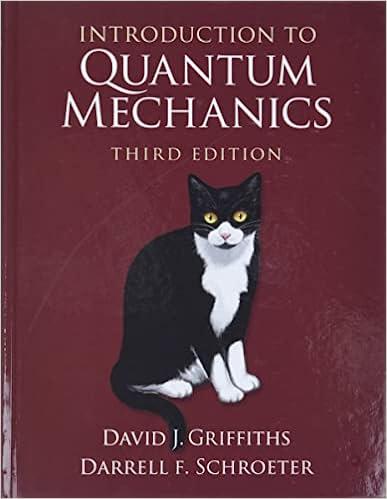Consider the case of a symmetrical double well, such as the one pictured in Figure 9.14. We
Question:
Consider the case of a symmetrical double well, such as the one pictured in Figure 9.14. We are interested in bound states with E < V(0).

Figure 9.14: Symmetric double well; Problem 9.17.
(a) Write down the WKB wave functions in regions (i) x > x2, (ii) x1 < x < x2, and (iii) 0 < x < x1. Impose the appropriate connection formulas at x1 and x2 (this has already been done, in Equation 9.47, for x2; you will have to work out x1 for yourself), to show that

where

(b) Because is symmetric, we need only consider even (+) and odd (-) wave functions. In the former case Ψ'(0) = 0, and in the latter case Ψ(0) = 0. Show that this leads to the following quantization condition
![]()
where

Equation 9.60 determines the (approximate) allowed energies
(c) We are particularly interested in a high and/or broad central barrier, in which case ϕ is large, and is huge. Equation 9.60 then tells us that θ
must be very close to a half-integer multiple of π. With this in mind, write θ = (n+1/2)π+∈, where |∈| << 1, and show that the quantization condition becomes

(d) Suppose each well is a parabola

Sketch this potential, find θ (Equation 9.59), and show that

Comment: If the central barrier were impenetrable (∅ → ∞), we would simply have two detached harmonic oscillators, and the energies,
En = (n+1/2)ћω, would be doubly degenerate, since the particle could be in the left well or in the right one. When the barrier becomes
finite (putting the two wells into “communication”), the degeneracy is lifted. The even states (Ψ+n) have slightly lower energy, and the odd ones (Ψ-n) have slightly higher energy.
(e) Suppose the particle starts out in the right well—or, more precisely, in a state of the form

which, assuming the phases are picked in the “natural” way, will be concentrated in the right well. Show that it oscillates back and forth
between the wells, with a period

(f) Calculate ϕ, for the specific potential in part (d), and show that for
![]()
Step by Step Answer:

Introduction To Quantum Mechanics
ISBN: 9781107189638
3rd Edition
Authors: David J. Griffiths, Darrell F. Schroeter





